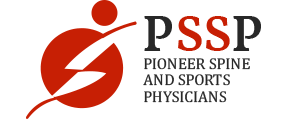Back Pain

What is Back Pain?
Back pain or backache is the pain felt in the back that may originate from muscles, nerves, bones, joints or other structures in the spine. Back pain is a common condition affecting approximately 80% of the population at some point in their lives. It can be acute, usually lasting from a few days to a few weeks, or chronic pain, lasting for more than three months.
Characteristics of Back Pain
Back pain can occur as a dull constant pain or a sudden sharp pain. Back pain may be confined to one area or may radiate to other areas such as the arm and hand, the upper back, or the lower back, and might radiate into the leg or foot.
Related Symptoms
Depending on the cause of pain, weakness, numbness or tingling in the arms or legs may occur.
Risk Factors for Back Pain
Athletes participating in sports such as skiing, basketball, football, ice skating, soccer, gymnastics, running, golf or tennis are at greater risk of developing back pain. During these sport activities, the spine needs to bear more stress, take up more pressure, undergo twisting and turning, as well as bodily impact. This may cause strain on the back that can result in back pain. Athletes are at high risk of back pain both from trauma and from overuse injuries, especially in sports requiring hyperextension.
Causes of Back Pain
Common causes of back pain in athletes include:
- Musculoligamentous strain: It is the most common sports injury caused by injury to the soft tissues around the spine
- Spondylolysis: Refers to a specific type of fracture, which can result from trauma but may also be congenital.
- Spondylolisthesis:It is a condition of the spine which occurs when one vertebra is displaced or has slipped forward over the other below it
- Herniated nucleus pulposus: When injury occurs, the central core of the disc is pushed through a tear in the outer hard layer of the disc, causing a bulge and pressing on nearby nerves. If the herniated disc presses on a spinal nerve, it can cause radiating symptoms.
Other causes include growth-related problems such as scoliosis and Scheuermann's kyphosis.
Diagnosis of Back Pain
PSSP will diagnose back pain by asking appropriate questions or by taking a history of your problem and examining your spine.
Treatment for Back Pain
Treatment for back pain is usually non-surgical and includes:
- Anti-inflammatory medications, or NSAIDs are recommended to provide relief from pain.
- Cold packs, heat packs or both, applied to the back can ease discomfort and relieve stiffness.
- Sleeping with the pillow between the knees while lying on one side or placing the pillow under your knees when lying on your back may help relieve back pain.
- Physical therapy including gentle manipulation to relieve pain and normalize biomechanics, as well as instruction in specific exercises to stabilize and strengthen the spine.
- Guided injections can be helpful for diagnosing and treating pain.
- Surgery is rarely indicated for back pain in the absence of nerve involvement.
Related Links
- Neck Pain
- Whiplash
- Back Pain
- Lumbar Radiculopathy
- Degenerative Disc Disease
- Disc Herniation
- Facet joint Arthritis
- Sciatica
- Spondylolysis
- Spondylolisthesis
- Vertebral Compression Fractures
- Scoliosis
- Kyphosis
- Cervical Disc Herniation
- Lumbar Disc Herniation
- Cervical Radiculopathy/Myelopathy
- Cervical Stenosis
- Lumbar Stenosis
